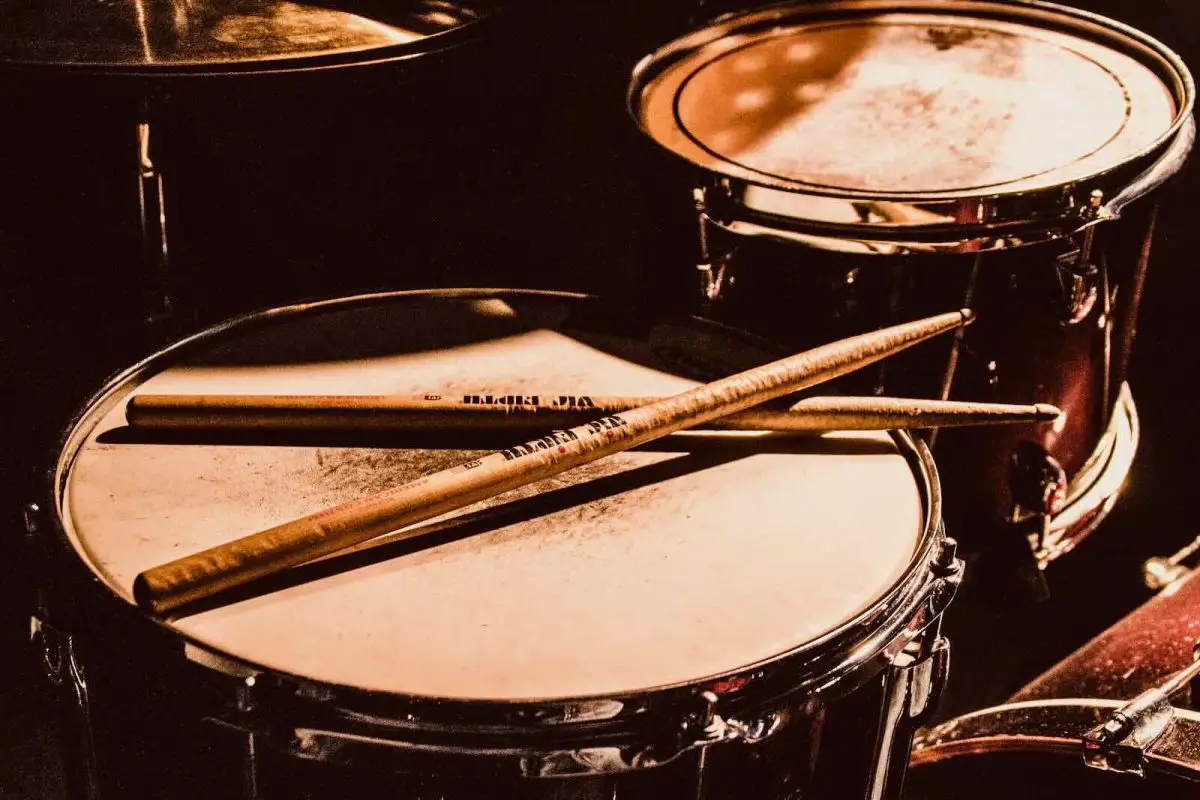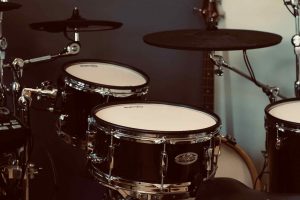Open hand drumming is a drumming technique where the drummer plays the drum kit with their hands positioned in a way that allows them to reach all the parts of the kit without crossing their hands. The technique primarily refers to playing the hi-hat with the left hand instead of the right hand.
Why do drummers usually play cross-handed?
If you’re new to drumming, you may wonder why drummers typically cross their arms while playing. Right-handed drummers need to place the hi-hat on the left to allow the bass drum to be played with the right foot, and so the natural solution is to cross the right hand over the left to be able to play the hi-hat cymbal with the more dominant hand.
But cross-handed drumming isn’t the only way to play the drums – it’s also possible to play open-handed. Read on to learn more about open-hand drumming.
What are the pros and cons of open hand drumming
| Pros | Cons |
| Allows lefty drummers to play kits set up for right-handed players | Sticking on drum notation will be written for right-handed players |
| Open-handed drumming can help develop ambidexterity | Visual learners may find it harder to watch and copy right handed drummers |
| Ability to play different grooves & fills that can’t be played cross-handed | |
| Greater reach and freedom to move around the kit |
Open drumming is accessible to both right and left-handed drummers, and allows left-handed drummers to play kits set up for right-handed players. We’ll look at this major benefit in more detail further down in this article.
While open-handed drumming opens up right-handed setups to left-handed players, it is also a great tool for right-handed players to become more ambidextrous, using their weaker hand to keep the beat and building left hand strength.
The open-handed style has different ergonomics to cross-handed, opening up your body to the kit more. This can lead to greater reach and improved ability to move around the kit, which can help you transition between different playing surfaces – or simply reach all your drums with ease if you have a monster set up.
Open-handed drumming can also open up different grooves and fills than you might be able to achieve with a cross-handed style, thanks to the different ergonomics and roles for each hand. Even if you’re a seasoned drummer, learning to drum open-handed may spark creativity with new rhythmic patterns or give you a new challenge to overcome.
For more of the benefits of open hand drumming, check out the video below from Drumeo featuring open-hand advocate Claus Hessler:
Of course, there are some downsides to open hand drumming. The first is that the vast majority of drumming educational material is designed for right handed, cross-handed drumming, not open hand drumming. The result is that where sticking patterns are provided, they’ll typically start with the right hand instead of the left hand. You may need to invert these patterns to be able to play them properly so that your hands are in the right place to play particular notes.
Secondly, if you prefer to learn the drums by sight and sound instead of reading music, you may find it harder to watch cross-handed drummers and then recreate that groove playing open-handed. Again, some mental gymnastics may be needed to work out the correct sticking patterns to get everything to work.
Open-handed drumming for left handed drummers on right handed kits
If you’re left handed and are just starting to play the drums, you should seriously consider playing open-handed. The major benefit of this is you can play a drum kit set up for right handed players with very little adjustment – usually just dropping the hi-hat down a little and potentially moving the ride cymbal to the left.
This will be hugely beneficial if you start gigging. Lefties make up around 10% of the general population, which means the overwhelming majority of drum kits will be set up for right-handed people. Being able to play a kit set up for a right-handed player will save a lot of time and effort if you have to share a kit with another act on the bill, as you’ll not need to disassemble and reassemble the kit between sets.
There may be a small cost saving also by playing open-handed, as playing with a left-handed set up may require one or two accessories to be a specific left-handed version. Most notably, if you’re into double pedal drumming and play a left-handed setup, you’d need a left handed double pedal. As the left-handed market makes up only 10% of the double pedal market, chances are your purchasing options will be more limited.
How to set up your drum kit for open-handed drumming
You don’t necessarily need to make any changes to your drum kit to play open-handed, however, there are some adjustments you can make to improve ergonomics.
Most open-handed drummers will mount their hi-hats slightly lower than cross-handed players, since there’s no need for extra space to overlap your drum sticks. This improves ergonomics since your left hand can be more at a right-angle when playing the hi-hats, as well as creating a better tone due to the angle your stick will be hitting the cymbals.
If you’re right handed, no other adjustments are needed. If you’re left handed, you might also want to reposition your ride cymbal to the left of your hi-hats, so you can continue to use your dominant hand to keep the beat and keep your right hand free to play the snare.
If you have limited space to the left of your kit, a good way to position the ride is to the left and above the hi-hats at a 45 degree angle, allowing a quick transition between the two plus plenty of room to reach all three main playing surfaces of the ride.
Exercises for open-handed drumming
Starting to play open handed drums is relatively simple as you can play the hi-hat grooves you would usually play, but with alternated roles for your left and right hands.
To begin, play a simple 4/4 groove using your left hand on the hi-hat and right hand on the snare drum. Playing along to a metronome, practise maintaining a constant tempo at 60 bpm, working your way up to 80, 100, 110, 120 bpm and higher. Try switching your left hand between playing quarter notes and eighth notes to get used to the different intervals.
From there, try introducing ghost notes on the snare drum. This will be difficult at first, since you’ll need to train your right hand to do something your left hand would usually do. This is part of the benefit of open-hand drumming, since you’ll be building up ambidexterity.
As you build your confidence with open-handed drumming, you’ll start to discover more about what it allows you to do that isn’t possible with cross-handed drumming. Here’s a great video from Max Hofmann with ArtOfDrumming explaining this:
Famous open-handed drummers
Open-handed drumming was first conceived by Jim Chaplin in his book Advanced Techniques for the Modern Drummer and Gary Chester in The New Breed.
It became popular in the 1960s and 70s by the first wave of open-handed drummers, who often adopted the technique due to instinct or experimentation. Some of these drummers include:
- Billy Cobham
- Lenny White
- Dennis Wilson
- Steve Upton
- Micky Dolenz
- Jürgen Rosenthal
- Art Tripp
- Pierlugi Calderoni
- Marcello Marcie Colò
- Rod de’Arth
A second and third wave of drummers later emerged, which can be found at Wikipedia. Modern open hand-drummers include Danny Carey of Tool, Michael Thomas of Bullet for my Valentine, and Ilan Rubin of Nine Inch Nails and Angels and Airwaves.


